
BMW7
版主2011-10-12 12:04:32
 楼主
楼主
- 那一抹清新和安静,川内伦子摄影作品推荐
-
跟帖:2条浏览9903次
- 引言:孩子的好奇是摄影最纯真的本源,而日本女摄影师Rinko Kawauc用她独特的baby eyes,向我们展示着不一样的影像世界...
6*6,方形的构图,泛着蓝光沁着白, 飘散着日常生活琐碎的气味,但又藏着一种神经质般的敏感——川内伦子,一名来自日本的女摄影师,给我的第一感觉。
凝视她的作品:昆虫的躯骸,鸟巢中待哺的雏雀、天空、水果、街道——为我们所熟识却同时被忽视的场景,在6×6画幅中以一种自然而温和的方式展现。
川内伦子惯常使用一台Rollei双反,在拍摄时大量运用闪光灯,削减了自然的光影效果,使得画面更多倾向平板、刺目,形成了Rinko Kawauch独有的影像风格。
我相信每一幅作品都表现着摄影家的心情。Rinko Kawauch将女性的敏锐触感凝入胶片,用最温和的方式把生活中她所看到的一切东西,锁链、水果、天空一一记录下来,杂糅着拍摄时的宁静,温暖的感觉油然而生。
生活中所有的微小都被她用影像的手段放大。而Rinko Kawauch又仿佛总是充斥着敏感的矛盾,NO WAR中仅有的一只小白狗,路人足边隐隐的血迹,厨案上的刀俎——每个细节都让人想入非非,仿佛看到了温暖中隐藏的悲情,平和中蕴藏的不安,苍白寒冷得要刺痛观看者的内心。
高度的神经质以及落寞,这是另一个Rinko Kawauch。
“我喜欢聆听周围细小的声音,那些轻细的低语对我来说如若生命的救赎,自然而然地将我的目光引向那些细微的事物。在涩谷散步时,我会情不自禁地奔向一小束路边的野花,也许别人会感到奇怪,但是我自己却很中意这种安静的关注。”
片多采取6*6的构图,捕捉日常生活中的细节,安静柔美却又酝酿着神经质的小情绪,明媚灿烂却又暗藏着成长的挣扎和阵痛。每一个经历过或残酷或绚烂青春的人都可以从这些作品中嗅出那些熟悉的味道,那些曾经疯长的小情绪。

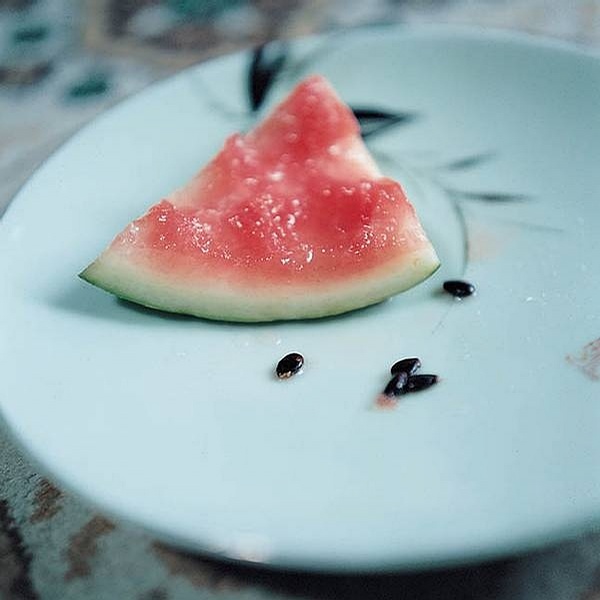

这是什么动物呢?它的眼神好奇怪。

像雪花一样飞舞的光点是什么呢?

天鹅。微微张开的翅膀,捕捉得很好~~

缝纫机?


容器的碎片。因为色调的缘故,不会觉得很颓废。

飞鸟。捕捉到的形态很不寻常。浓浓的孤寂感。



像印在蓝天上的图案的花朵。





公路的转弯处,那柔和夕阳?

















 找来了川内伦子的英文介绍和采访。
Interview: Rinko Kawauchi
Rinko Kawauchi (1972) has already won several international awards, and she has had, and continues to have, a prolific publishing profile. In a matter of a few years she published around six significant books featuring different series of her work including: Aila(2004); Hanabi(2001); Utatane(2001); Hanako(2001); Cui Cui(2005) and the eyes the ears (2005). The flow of Rinko's images echoes the cycle of nature as much as her subject matter focuses on both the natural world and humans' place within it. She has at times presented her work alongside her own haiku poetry.
Kawauchi is nterviewed by Masakazu Takei, an editor and the representative of FOIL, a publisher in Tokyo. He has been editing all the photobooks of Rinko Kawauchi published from Little More and FOIL.
Interview:Masakazu Takei
Foto:Katrine Bartram Reinert Nielsen
Rinko Kawauchi (JP)
Aila + the eyes, the ears
25. november - 21. januar 2007
Fotografisk Center
Gammel Strand 48, 1202 K鴅enhavn K
web site:http://www.photography.dk/
Tirsdag - s鴑dag 11-17
找来了川内伦子的英文介绍和采访。
Interview: Rinko Kawauchi
Rinko Kawauchi (1972) has already won several international awards, and she has had, and continues to have, a prolific publishing profile. In a matter of a few years she published around six significant books featuring different series of her work including: Aila(2004); Hanabi(2001); Utatane(2001); Hanako(2001); Cui Cui(2005) and the eyes the ears (2005). The flow of Rinko's images echoes the cycle of nature as much as her subject matter focuses on both the natural world and humans' place within it. She has at times presented her work alongside her own haiku poetry.
Kawauchi is nterviewed by Masakazu Takei, an editor and the representative of FOIL, a publisher in Tokyo. He has been editing all the photobooks of Rinko Kawauchi published from Little More and FOIL.
Interview:Masakazu Takei
Foto:Katrine Bartram Reinert Nielsen
Rinko Kawauchi (JP)
Aila + the eyes, the ears
25. november - 21. januar 2007
Fotografisk Center
Gammel Strand 48, 1202 K鴅enhavn K
web site:http://www.photography.dk/
Tirsdag - s鴑dag 11-17
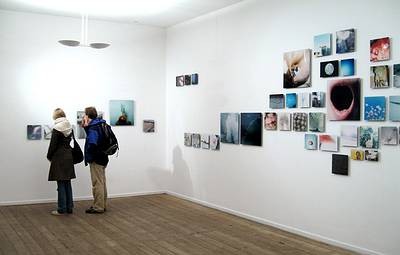 Rinko Kawauchi: Aila + the eyes, the ears,
When did you begin studying photography?
I attended a two-year college and took a photography class once a week, which I enjoyed more than anything else.
Did you intend to become a photographer when you entered college?
No. I went to art school because I thought it would be fun to take art class every day. I was interested in studying drawing, design and images. But what I enjoyed the most was my photography class.
Rinko Kawauchi: Aila + the eyes, the ears,
When did you begin studying photography?
I attended a two-year college and took a photography class once a week, which I enjoyed more than anything else.
Did you intend to become a photographer when you entered college?
No. I went to art school because I thought it would be fun to take art class every day. I was interested in studying drawing, design and images. But what I enjoyed the most was my photography class.
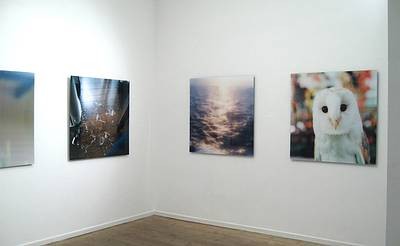 Rinko Kawauchi: Aila + the eyes, the ears,
What did you do just after graduating from college?
I was employed by an advertising company and worked in the photography section only for a year. After that, I worked as an assistant at a photography rental studio in Tokyo for about one and a half years. The first year I spent most of my time shooting packaging and works of art. This experience helped me learn a lot about technique. After about three years working for others, I decided to go free lance.
As a free lance photographer did you work more for advertising or for magazines?
In the beginning I worked more for advertising. However I have had many different types of clients including magazines.
Your first publications were the trilogy of photo books Utatane, Hanabi and Hanako. As a free lance shooting commercial work, when did you find the time to work on personal projects such as Utatane?
Well, sometimes I would work on my personal projects during the spare time I had between each job. At other times, I would shoot what caught my eye while working on a advertising project. I always carried a camera with me just in case.
Rinko Kawauchi: Aila + the eyes, the ears,
What did you do just after graduating from college?
I was employed by an advertising company and worked in the photography section only for a year. After that, I worked as an assistant at a photography rental studio in Tokyo for about one and a half years. The first year I spent most of my time shooting packaging and works of art. This experience helped me learn a lot about technique. After about three years working for others, I decided to go free lance.
As a free lance photographer did you work more for advertising or for magazines?
In the beginning I worked more for advertising. However I have had many different types of clients including magazines.
Your first publications were the trilogy of photo books Utatane, Hanabi and Hanako. As a free lance shooting commercial work, when did you find the time to work on personal projects such as Utatane?
Well, sometimes I would work on my personal projects during the spare time I had between each job. At other times, I would shoot what caught my eye while working on a advertising project. I always carried a camera with me just in case.
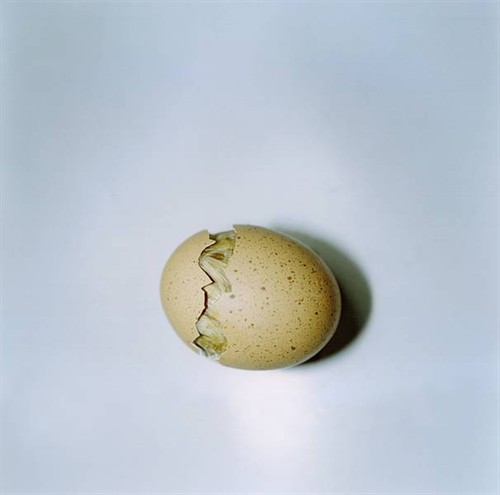
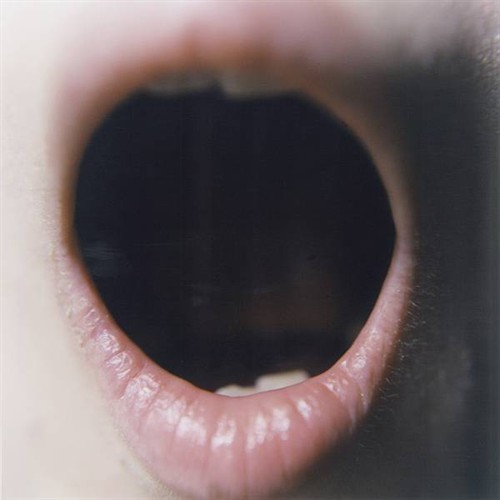
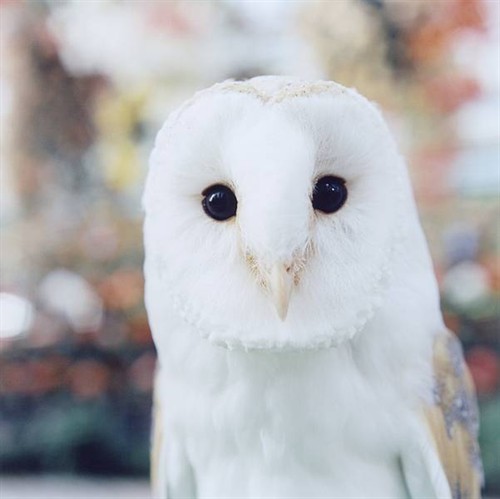 Do you have a different approach to photography when you are doing your personal work?
I've been often asked that question. When I am shooting there is no difference in my approach whether I am doing personal work or commercial work. However when I am selecting them and putting them together, I do think about where and how the prints will be shown. For commercial photos, I sometimes have to shoot subjects that are set up in a studio, so perhaps I should say there is a difference with my personal work. I have a much clearer intention in mind when I am doing commercial work. But even when I am working on an advertisement, I am looking for the same kind of feelings and sensations as I am shooting.
When you shoot, do you have any specific plans?
It depends on the series. Generally, I have a potential book in mind. For Utatane, I took pictures of things that moved me. For Hanabi, I had something very specific in mind. I searched for the times and places of summer fireworks shows in Japan. I wanted to photograph them from many different points of view. I often shoot with the idea of a project in mind: a view from a hotel room, a view of the highway. Then I work on the layout of my publication.
Do you have a different approach to photography when you are doing your personal work?
I've been often asked that question. When I am shooting there is no difference in my approach whether I am doing personal work or commercial work. However when I am selecting them and putting them together, I do think about where and how the prints will be shown. For commercial photos, I sometimes have to shoot subjects that are set up in a studio, so perhaps I should say there is a difference with my personal work. I have a much clearer intention in mind when I am doing commercial work. But even when I am working on an advertisement, I am looking for the same kind of feelings and sensations as I am shooting.
When you shoot, do you have any specific plans?
It depends on the series. Generally, I have a potential book in mind. For Utatane, I took pictures of things that moved me. For Hanabi, I had something very specific in mind. I searched for the times and places of summer fireworks shows in Japan. I wanted to photograph them from many different points of view. I often shoot with the idea of a project in mind: a view from a hotel room, a view of the highway. Then I work on the layout of my publication.

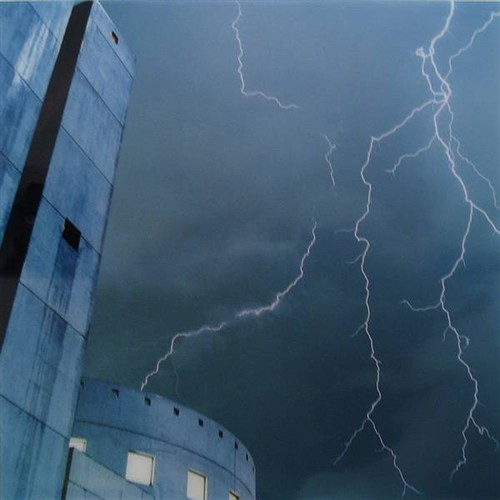
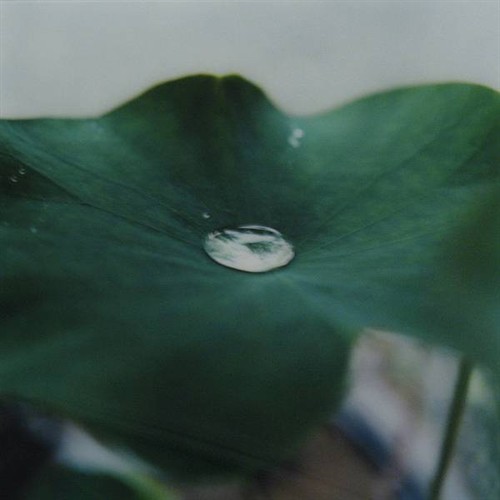 What do you think about while you are shooting?
Basically I try not to think about anything.
Like athletes who can move their bodies without thinking?
Sometimes I am thinking as I shoot, but the best photos are brought about when I am not thinking about anything ?when my mind is empty of thought. When I am intently concentrated, I feel nothing of myself. I think it's similar to "runner's high".
Do you have this same feeling when you are putting together a series?
As I am printing, I always think about how I will put together a series ?at this stage my mind and my body are working together. I sometimes have a hard time finding an idea, but after several days of printing and reflection an idea will come to me suddenly.
What do you think about while you are shooting?
Basically I try not to think about anything.
Like athletes who can move their bodies without thinking?
Sometimes I am thinking as I shoot, but the best photos are brought about when I am not thinking about anything ?when my mind is empty of thought. When I am intently concentrated, I feel nothing of myself. I think it's similar to "runner's high".
Do you have this same feeling when you are putting together a series?
As I am printing, I always think about how I will put together a series ?at this stage my mind and my body are working together. I sometimes have a hard time finding an idea, but after several days of printing and reflection an idea will come to me suddenly.
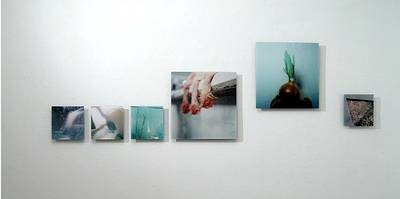 Everyone says that you have a very unique way of capturing light on your prints. What do you think?
I do not do this consciously.
Sometimes your shots are deliberately en contre-jour?
Atmosphere and lighting are very important to me. When I photograph en contre-jour, what I am trying to do is capture the soul or aura of the subject rather than the subject itself... I guess that is the reason why people say that my lighting is unique.
In your work, you often address the universal themes of life and of death. Are these themes particularly important to you?
I do not necessarily think about them consciously while I am shooting. They emerge as I select the prints and put them together as a series. This is a very important process to me, as important as the shooting process. I look at my works objectively and calmly during this stage.
Are there moments during a shoot when you are sure that you have taken a great photograph? Or moments during the development when you are surprised by something you discover on a print?
I love it when I discover something extraordinary in my prints while developing. There are always moments when I surprise myself by seeing something I did not expect to find.
After you develop a photograph, you reexamine it and decide how you will include it within a series of images? This could be called an editorial approach to photography.
Sometimes I feel that it would be better not to do this. If you think too much about the selection of photographs and how they will be put together, the result will seem over-structured, artificially composed. It is always difficult to use good judgment during this process.
Everyone says that you have a very unique way of capturing light on your prints. What do you think?
I do not do this consciously.
Sometimes your shots are deliberately en contre-jour?
Atmosphere and lighting are very important to me. When I photograph en contre-jour, what I am trying to do is capture the soul or aura of the subject rather than the subject itself... I guess that is the reason why people say that my lighting is unique.
In your work, you often address the universal themes of life and of death. Are these themes particularly important to you?
I do not necessarily think about them consciously while I am shooting. They emerge as I select the prints and put them together as a series. This is a very important process to me, as important as the shooting process. I look at my works objectively and calmly during this stage.
Are there moments during a shoot when you are sure that you have taken a great photograph? Or moments during the development when you are surprised by something you discover on a print?
I love it when I discover something extraordinary in my prints while developing. There are always moments when I surprise myself by seeing something I did not expect to find.
After you develop a photograph, you reexamine it and decide how you will include it within a series of images? This could be called an editorial approach to photography.
Sometimes I feel that it would be better not to do this. If you think too much about the selection of photographs and how they will be put together, the result will seem over-structured, artificially composed. It is always difficult to use good judgment during this process.
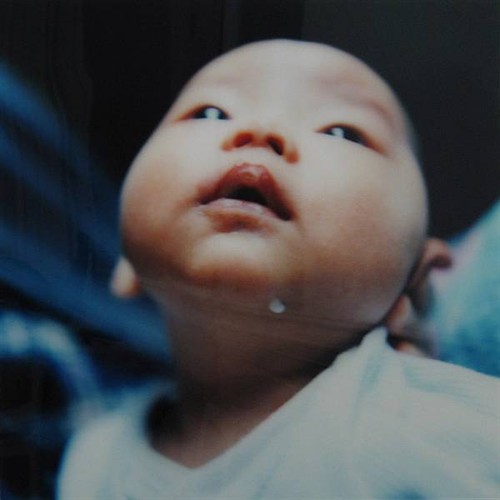
 How do photography books differ from exhibitions?
The biggest difference is that a photography book can be held in your hands. It can thus be appreciated on a more intimate level. Exhibitions are seen in white boxes. When you are putting together a photography book, you must keep in mind that you look at them in a sequential way as you turn the pages. When viewing an exhibition, what counts most is the space and how it is structured. These are two very different ways of looking at photographs.
In your exhibitions, you often present a selection of photographs in a small box-like room.
When possible I like people to view the images in a very small space. In this way, the public is brought closer to the work.
The experience thus becomes similar to viewing the photographs in photography book.
Up until now, I have been mainly focused on making publications. It is probably for this reason that I like people to view my works up close. Although I know there are many advantages to showing my work in larger spaces, I still believe it is more suited for smaller spaces. For this reason, I always make sure that there is a small room where people can appreciate the work on a more intimate level. The one I made for the exhibition at Art Tower Mito was called a confession room, which was well described.
It was like a church?
It owed the effect to the height of the ceiling and the way the sunlight streamed into the room. When I am shooting, I appreciate the same kind of atmosphere. I want to create a quiet, intimate place where people can be alone and listen to their inner voices while they are looking at my works.
How do photography books differ from exhibitions?
The biggest difference is that a photography book can be held in your hands. It can thus be appreciated on a more intimate level. Exhibitions are seen in white boxes. When you are putting together a photography book, you must keep in mind that you look at them in a sequential way as you turn the pages. When viewing an exhibition, what counts most is the space and how it is structured. These are two very different ways of looking at photographs.
In your exhibitions, you often present a selection of photographs in a small box-like room.
When possible I like people to view the images in a very small space. In this way, the public is brought closer to the work.
The experience thus becomes similar to viewing the photographs in photography book.
Up until now, I have been mainly focused on making publications. It is probably for this reason that I like people to view my works up close. Although I know there are many advantages to showing my work in larger spaces, I still believe it is more suited for smaller spaces. For this reason, I always make sure that there is a small room where people can appreciate the work on a more intimate level. The one I made for the exhibition at Art Tower Mito was called a confession room, which was well described.
It was like a church?
It owed the effect to the height of the ceiling and the way the sunlight streamed into the room. When I am shooting, I appreciate the same kind of atmosphere. I want to create a quiet, intimate place where people can be alone and listen to their inner voices while they are looking at my works.
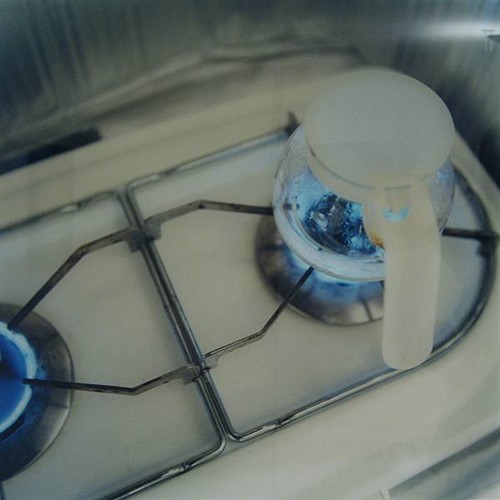
 What were your interests as a child?
I wasn't a very cheerful child. I was rather gloomy. I didn't like school. I was always reading books, but they were nothing serious - fairy tales, illustrated children's books, novels for young women, and world literature.
Do you enjoy reading?
I like books. Even if I don't understand the content, I am happy just having them. I love libraries. Since there were not many books in my school library, I often went to the municipal library in Tsurumi Ward(Osaka) by bicycle. I like being by myself in the library.
Did you look at any photography books when you were a child?
Yes. I saw American Roulette of Shinya Fujiwara when I was in elementary school. I couldn't understand why he had given that title to his book of photographs of the US. I tried to read the postscript, but it was too difficult for me to understand. I also saw his publication Memento-Mori as well as Joji Hashiguchi's 17 years old and couple. I was also interested in photographs of animals in nature books. I remember being particularly surprised by the texts in Hashiguchi's couple. I was even reading Osamu Hashimoto and Seiko Tanabe. Once, a young librarian told me that I was too young to be reading such books. I didn't care and just kept reading them even though I didn't always understand them.
Who are the photographers that you particularly respect and why?
In Japan, I respect Kyoji Takahashi, Toyohisa Araki, Daido Moriyama and Takuma Nakahira. In Europe, I respect Boris Mikhailov. I also like the works of Wolfgang Tillmans. I generally respect the work of all photographers.
Have you been influenced by anyone?
Though there are many people, Banana Yoshimoto has influenced the spiritual part of me very much. I was also influenced by the work of Satoru Sato, a great illustrator of children's books.
It is very difficult for young artists abroad to publish their books before they exhibit their works, while in Japan young artists can publish their work relatively easily. What do you think of this difference in opportunities?
It has been my first goal to publish books. It has been more important to me than making an exhibition. Even when I knew my work would not be published, I did not consider it completed until I was finished organizing it into portfolios. Before I published my first book, I was making my own handmade books every half a year or so. It was very important for me to unify my works into a series before moving on to the next stage. For me an exhibition is a reward, not a goal in and of itself. I think that if I was not able to publish my work, I would continue making books on my own. It is more important to me to show my works in the form of a book than to show the print itself.
What were your interests as a child?
I wasn't a very cheerful child. I was rather gloomy. I didn't like school. I was always reading books, but they were nothing serious - fairy tales, illustrated children's books, novels for young women, and world literature.
Do you enjoy reading?
I like books. Even if I don't understand the content, I am happy just having them. I love libraries. Since there were not many books in my school library, I often went to the municipal library in Tsurumi Ward(Osaka) by bicycle. I like being by myself in the library.
Did you look at any photography books when you were a child?
Yes. I saw American Roulette of Shinya Fujiwara when I was in elementary school. I couldn't understand why he had given that title to his book of photographs of the US. I tried to read the postscript, but it was too difficult for me to understand. I also saw his publication Memento-Mori as well as Joji Hashiguchi's 17 years old and couple. I was also interested in photographs of animals in nature books. I remember being particularly surprised by the texts in Hashiguchi's couple. I was even reading Osamu Hashimoto and Seiko Tanabe. Once, a young librarian told me that I was too young to be reading such books. I didn't care and just kept reading them even though I didn't always understand them.
Who are the photographers that you particularly respect and why?
In Japan, I respect Kyoji Takahashi, Toyohisa Araki, Daido Moriyama and Takuma Nakahira. In Europe, I respect Boris Mikhailov. I also like the works of Wolfgang Tillmans. I generally respect the work of all photographers.
Have you been influenced by anyone?
Though there are many people, Banana Yoshimoto has influenced the spiritual part of me very much. I was also influenced by the work of Satoru Sato, a great illustrator of children's books.
It is very difficult for young artists abroad to publish their books before they exhibit their works, while in Japan young artists can publish their work relatively easily. What do you think of this difference in opportunities?
It has been my first goal to publish books. It has been more important to me than making an exhibition. Even when I knew my work would not be published, I did not consider it completed until I was finished organizing it into portfolios. Before I published my first book, I was making my own handmade books every half a year or so. It was very important for me to unify my works into a series before moving on to the next stage. For me an exhibition is a reward, not a goal in and of itself. I think that if I was not able to publish my work, I would continue making books on my own. It is more important to me to show my works in the form of a book than to show the print itself.
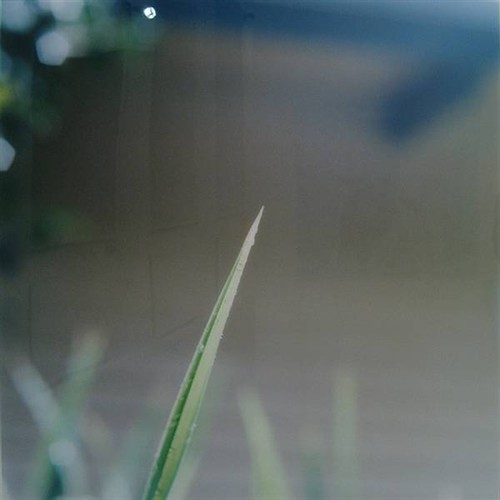
 You simultaneously released three photography books in Japan. Did your situation change following the release of these publications?
It completely changed my life. It means that I am now appreciated as an artist. You are not recognized as an artist in Japan unless you have published something. People place more importance on your publications than on your exhibitions. For the selection of Annual Kimura Ihei Award, what they consider is the publications.
For this exhibition, you will show the photographs from AILA, the eyes, the ears, and cui, cui. What does each titles mean?
AILA comes from the Turkish word meaning ig family?or more generally relationship? the eyes, the ears, is about what can be captured with our five senses; not only what the eyes see, but also what the ear hears and the skin touches.
the eyes, the ears, represents your first experience bringing together your photos and your poems?
Organizing the photographs has gone smoothly because I usually listen to my inner voice when I am doing this. I have had many offers from various magazines to write, but I have always been a little reluctant to put words next to my images. I tried to express my inner voice as well in my poems as I do in my photographs. It was also a challenge for me to do things in a new way.
The AILA series not only deals with the themes of birth and death, it also includes scenes from everyday life. Why did you include these images in this series?
If I had not included these scenes from the everyday, the series would have been cut off from reality. I included them to make daily reality more tangible. As a result, the series became more interesting.
Why did you choose cui cui as a title?
Since I knew the exhibition would take place in France, I consulted a French dictionary. There was a column about how birds cry in various languages. It is "chun, chun" in Japanese and "cui, cui" in French, and so on. Among them, "cui, cui" sounded very cute, while the sound of "chun, chun" was too familiar for me. As it is a photobook of my family, I didn't want it to have a weighty meaning. In this regard, the sound of "cui, cui" was exotic and suitable for the title.
How long have you been taking the photographs of your family?
For about 10 years. It is really a quite an average family. Although there are dramas in the life of any family, I didn't want to focus on this aspect of things in cui cui. There is nothing exceptionally dramatic shown in this series. I wanted to consider the events that can happen to any family. I thus tried to avoid focusing on the specific qualities or personality of my own family. For me, these events are sometimes as small and insignificant as the cry of a sparrow. People die, live, get married, grow apart... I hope that after seeing my work people will begin to reexamine their own families. But it was very difficult to put the series together.
What was difficult for you?
I tried to be objective, but this was very difficult because the images concern my own family. I felt that in order to merit a presentation and publication, the work had to be more than just a personal family album. I wanted to make a book that would bring people to reflect upon their own family relationships. More generally, I would like that my work serve as a catalyst for people to think about themselves and their relationship to the world.
There are a great many photographs in the size of 6x6. Are there any reason for it? What kind of camera do you use?
I use Rolleiflex twin-lens reflex camera in 6x6 format.
Do you use any other camera?
I use Hasselblad 6x6 and Canon A1 and F1 once in a while. Also Kyocera T Proof, a compact camera and Panon Widelux, a panoramic camera. And I want to use 4x5 format from now on.
Do you change your equipment when you go from a commercial shoot to your personal work?
I rarely change them. I judge on a case-by-case basis. But I don't change the equipment I carry. When I go on location, people are always surprized at my very small luggage. I bought a suitcase only a year ago or so. I used to go abroad with a small camera bag and a backpack. As for the tripod, I only have a small one.
I believe that you will be doing more and more exhibitions abroad from now on. How do you feel about this?
I am grateful for having many opportunities. They are like rewards to me as I've explained before. I think I'm very fortunate that my works will be seen by many people. I would like to work on each exhibition earnestly and steadily.
You simultaneously released three photography books in Japan. Did your situation change following the release of these publications?
It completely changed my life. It means that I am now appreciated as an artist. You are not recognized as an artist in Japan unless you have published something. People place more importance on your publications than on your exhibitions. For the selection of Annual Kimura Ihei Award, what they consider is the publications.
For this exhibition, you will show the photographs from AILA, the eyes, the ears, and cui, cui. What does each titles mean?
AILA comes from the Turkish word meaning ig family?or more generally relationship? the eyes, the ears, is about what can be captured with our five senses; not only what the eyes see, but also what the ear hears and the skin touches.
the eyes, the ears, represents your first experience bringing together your photos and your poems?
Organizing the photographs has gone smoothly because I usually listen to my inner voice when I am doing this. I have had many offers from various magazines to write, but I have always been a little reluctant to put words next to my images. I tried to express my inner voice as well in my poems as I do in my photographs. It was also a challenge for me to do things in a new way.
The AILA series not only deals with the themes of birth and death, it also includes scenes from everyday life. Why did you include these images in this series?
If I had not included these scenes from the everyday, the series would have been cut off from reality. I included them to make daily reality more tangible. As a result, the series became more interesting.
Why did you choose cui cui as a title?
Since I knew the exhibition would take place in France, I consulted a French dictionary. There was a column about how birds cry in various languages. It is "chun, chun" in Japanese and "cui, cui" in French, and so on. Among them, "cui, cui" sounded very cute, while the sound of "chun, chun" was too familiar for me. As it is a photobook of my family, I didn't want it to have a weighty meaning. In this regard, the sound of "cui, cui" was exotic and suitable for the title.
How long have you been taking the photographs of your family?
For about 10 years. It is really a quite an average family. Although there are dramas in the life of any family, I didn't want to focus on this aspect of things in cui cui. There is nothing exceptionally dramatic shown in this series. I wanted to consider the events that can happen to any family. I thus tried to avoid focusing on the specific qualities or personality of my own family. For me, these events are sometimes as small and insignificant as the cry of a sparrow. People die, live, get married, grow apart... I hope that after seeing my work people will begin to reexamine their own families. But it was very difficult to put the series together.
What was difficult for you?
I tried to be objective, but this was very difficult because the images concern my own family. I felt that in order to merit a presentation and publication, the work had to be more than just a personal family album. I wanted to make a book that would bring people to reflect upon their own family relationships. More generally, I would like that my work serve as a catalyst for people to think about themselves and their relationship to the world.
There are a great many photographs in the size of 6x6. Are there any reason for it? What kind of camera do you use?
I use Rolleiflex twin-lens reflex camera in 6x6 format.
Do you use any other camera?
I use Hasselblad 6x6 and Canon A1 and F1 once in a while. Also Kyocera T Proof, a compact camera and Panon Widelux, a panoramic camera. And I want to use 4x5 format from now on.
Do you change your equipment when you go from a commercial shoot to your personal work?
I rarely change them. I judge on a case-by-case basis. But I don't change the equipment I carry. When I go on location, people are always surprized at my very small luggage. I bought a suitcase only a year ago or so. I used to go abroad with a small camera bag and a backpack. As for the tripod, I only have a small one.
I believe that you will be doing more and more exhibitions abroad from now on. How do you feel about this?
I am grateful for having many opportunities. They are like rewards to me as I've explained before. I think I'm very fortunate that my works will be seen by many people. I would like to work on each exhibition earnestly and steadily.


 每张照片都仿佛在讲述一个故事。
每张照片都仿佛在讲述一个故事。